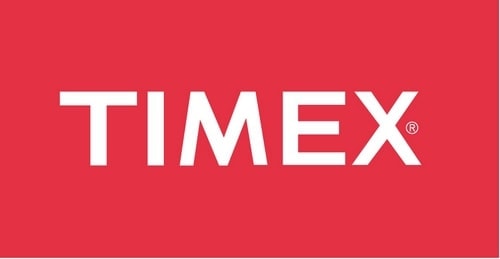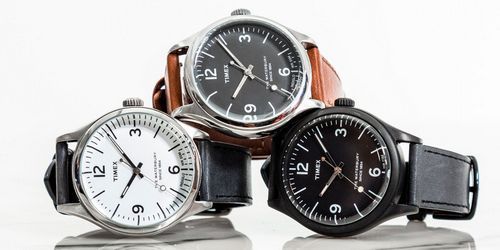The Marketing mix of Timex analyses the 4Ps of Timex, including the Product, Price, Place, and Promotions. Timex Group USA, Inc. was started in 1854 near Waterbury, Connecticut, hence its first name, Waterbury Clock Company. It was founded by Thomas Olsen, a brass manufacturer, after which it was legally incorporated as an independent business in 1857.
The company was later named Timex, then Timex Corporation, and ultimately Timex Group USA in 2008. Its ability to manufacture and sell millions of watches led to Waterbury’s nicknamed the “Switzerland of America.”
Timex is an Indian wristwatch-making company that has established itself globally as a much-known force, though it has not done as much within the Indian market. Since its inception, it has expanded its technology, product, and market base. Brutally a formidable force, it is not without steady competition within India.
The company has three main competitors that manufacture their brand of wristwatches in India.
- Titan
- Casio and
- Citizen
While analyzing Timex’s market position, it’s essential to consider its competition with brands like Titan, especially in key markets. Titan is by far the powerhouse in the country in sales, as its market share stands at a staggering 65%. Timex comes second with about 12%, Casio with about 4%, and Citizen comes last with 2%.
About Timex Group
- Type: Multinational watchmaking company
- Industry: Watchmaking
- Founded: 1854
- Founder: Waterbury Clock Company
- Headquarters: Middlebury, Connecticut, United States
- Area served: Worldwide
- Key people: Ronald S. Sletten (Chairman) and Louis Camilleri (CEO)
- Number of employees: 30,000
Table of Contents
Timex Product Strategy
Timex has pioneered the wristwatch category, offering innovative features catering to a diverse consumer base. Timex has invested most of its resources, including time, in designing, producing, marketing, and developing various products. Some of its signature products are sold in popular brands such as Marc Ecko, Tarun Tahiliani, Salvatore Ferragamo, Helix, and Versace. With these marketing brands, Timex has also ventured into producing watches such as Intelligent Quartz, Expedition, Classics, Empera, and Weekender.
The new Product Mix of Timex in 2023 is as follows (Source).
- Automatic Watches: These are self-winding watches that do not require a battery. Notable models include the Giorgio Galli S2 Automatic, Waterbury Dive Automatic, Marlin® Automatic (with variations like the Peanuts Gang’s All Here edition), and various automatic watches under the Tiburón and Navi XL collections.
- Chronograph Watches: Timex offers watch functionality with a stopwatch, which is suitable for those requiring time-tracking capabilities.
- Diver-Inspired Watches: These are designed with features that cater to diving enthusiasts, offering water resistance and robust build quality.
- Digital Watches: Timex provides a range of digital watches, including activity tracking and alarms.
- Eco-friendly Watches: Timex also focuses on sustainability, with watches made from eco-conscious materials like upcycled ocean plastics and apple leather.
- Collaborative Collections (Co_Labs): Timex collaborates with various brands and artists, offering unique and limited-edition watches. These collaborations include Timex x UFC, Timex x The MET, Timex x Keith Haring, and more.
- Sports Watches: This category includes models like the Timex Ironman Flix, designed for sports and fitness enthusiasts with heart rate tracking and activity monitoring features.
- Fan Shop Watches: Timex also caters to sports fans with watches themed around significant sports leagues like MLB, NFL, NHL, and UFC.
- Variety in Strap Materials: The brand offers a variety of strap materials, including fabric, leather, resin, silicone, stainless steel, and synthetic rubber.
- Special Features: Some watches have unique features like INDIGLO® night-light, sapphire crystal, solar power, temperature sensors, and tide tracking.
Timex Place Strategy
Globally, Timex is doing pretty well as it is trendy. Its primary source of revenue is from the international markets. However, the company’s performance is very dismal in the market-wise in its home country, India. During the initial years, the company concentrated more on the rural and urban areas only when the market changed to favor the specific areas. In other words, they would move with the wave rather than control the tides.
Today, Timex’s target market is mainly the urban areas and those few classy people in the rural, especially the youth. Timex has opened shops in malls and retail shops, primarily where youths can be found at maximum, as this is their primary target group today. It has also gone ahead to market and sell its products in major Indian cities by opening its exclusive stores called Timex World & Time Factory.
Here’s a summary of Timex’s place strategy:
- Global Expansion and Limited Edition Launches: Timex focuses on strengthening its position in key markets like India by launching exclusive, limited-edition ranges.
- Experiential Retail: Emphasizing the importance of physical stores, Timex may enhance customer experience through interactive activities, blending online and offline elements to create immersive shopping environments.
- Sustainability Focus: Environmental responsibility is likely an essential aspect of Timex’s strategy, potentially involving transparent product lifecycle information and sustainable packaging initiatives.
- Technological Integration: The use of AI for personalized shopping experiences and contactless, efficient checkout processes could be a focus, enhancing customer convenience and engagement.
- Localized Retail Development: Timex may invest in suburban and downtown retail development, catering to local communities with more minor, strategically located stores and micro-fulfillment centers for faster delivery.
Timex Pricing Strategy
Initially, Timex made low-end products that only targeted timid and budget buyers. With time, the company saw the need to get the most out of society. As it is clear that what will impress the rich will not be what the poor want and vice versa, Timex started producing different lifestyle products for different levels and categories of people.
As a result, today, you will find Timex watches within the range of Rs. 1,500 to Rs. 5,000 and above for low and middle-class customers. Classics, Intelligent Quartz, and Weekender are some brands commonly rated within this price range. The high-end premium watches that will go for more than one lakh are found within the Salvatore Ferragamo and Versace brands. In a nutshell, all classes of people can find something to suit them within the Timex brands.
Timex’s pricing and marketing strategy can be described as follows:
- Segmented Pricing Approach: Timex operates across various price segments, catering to diverse consumers. This strategy allows them to target different market segments effectively.
- Affordability and Accessibility: An essential aspect of Timex’s pricing strategy is its focus on affordability. This makes Timex watches accessible to a broad consumer base, including those looking for quality timepieces at lower prices.
- Wide Price Range: Timex’s product range includes watches priced as low as $40, appealing to the mid-price segment, and extends up to $300 for high-end premium watches. This comprehensive price range strategy enables them to cater to budget-conscious and premium customers.
- Mass-Market and Luxury Segments: Timex has a product line spans from mass-market offerings in retail stores like Walmart to luxury watches in their Timex Boutique. This diversified approach allows them to appeal to a broad spectrum of customers.
- Economies of Scale in Manufacturing: By manufacturing watches in larger quantities, Timex leverages economies of scale, which helps keep production costs low and allows the brand to offer quality watches at competitive prices.
In summary, Timex’s pricing strategy is a blend of affordability, innovation, accessibility, and a wide range that caters to various consumer segments, from budget-friendly to premium luxury watches.
Timex Promotion Strategy
Other than ordinary website and print media advertisements, Timex has only done two prominent adverts in its history. Its prime advert was the sponsorship of the 2011 ICC World Cup version. During its primary days, Timex endorsed Brett Lee as its ambassador shortly. However, this was just short-lived, and after that, there hasn’t been much that the company has done regarding celebrity partnerships and endorsement to promote the company or other brands. Other companies have also promoted by-products by giving special discounts, which Timex rarely does.
Some Recent Video ads and Print ads for Timex are:
Liked this post? Check out the complete series on Marketing Mix

